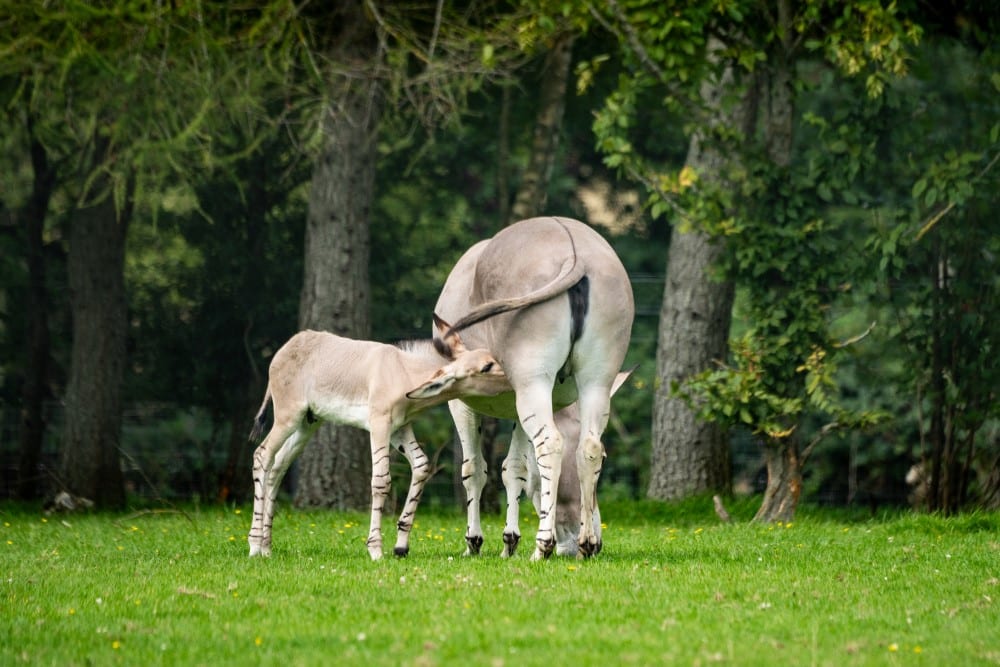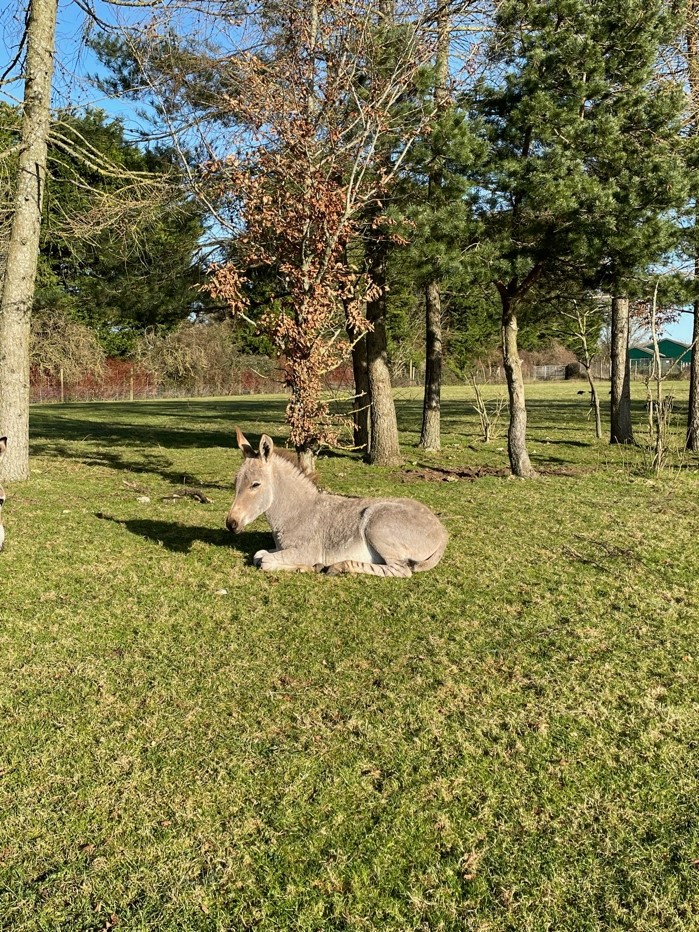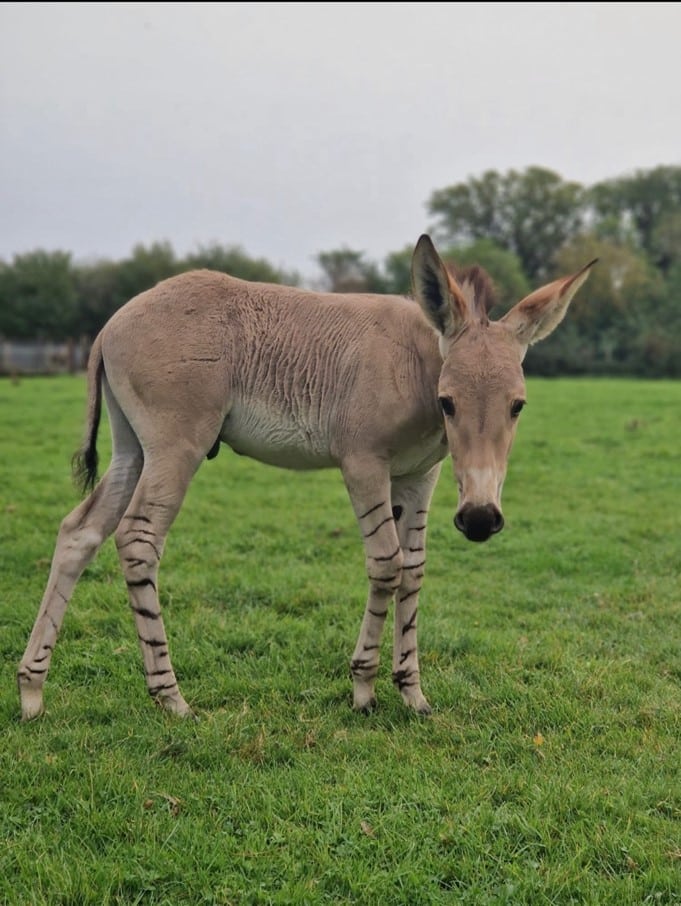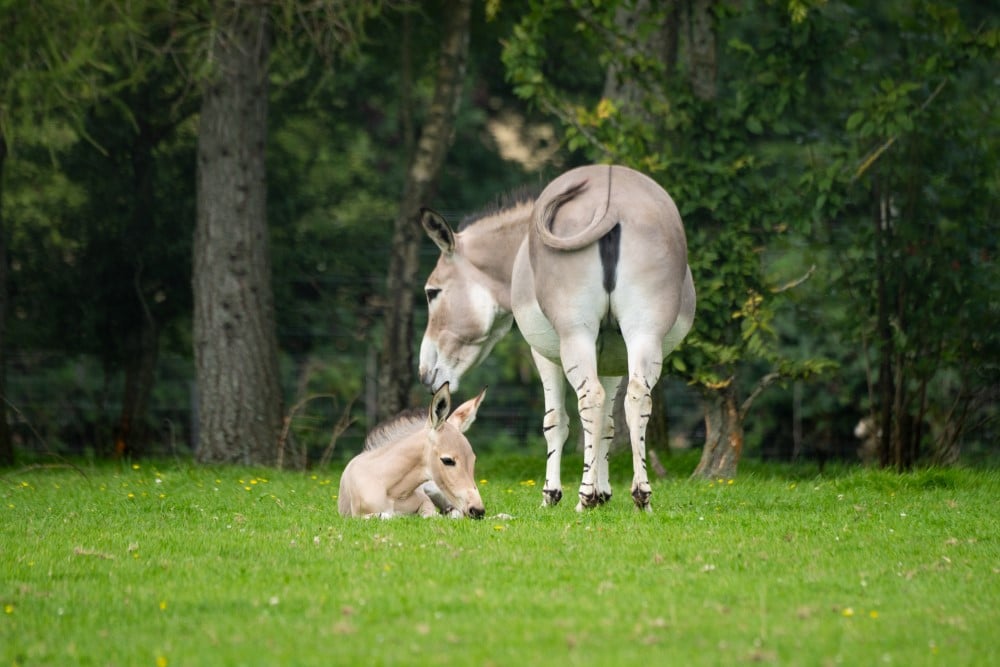Our African wild ass foal turns one
August 20, 2024
August 20, 2024

Hi there, Marwell supporters,
My name’s Georgie, and I’m a zookeeper on the Hoofstock Team here at Marwell Zoo. A little while ago, I gave you an insight into a typical day at the park for our team, and how we prepared for our adorable new okapi calf.
Today, I’m here to give you more behind-the-scenes access and tell you all about our African wild ass (Equus africanus).
I know how much you all love animal babies, and I completely understand why – they’re so adorable. However, there is much more to these arrivals than just stealing our hearts.
As you may already know, Marwell Wildlife is part of multiple breeding programmes, along with all other British and Irish Association of Zoos and Aquariums (BIAZA) accredited members. This means that sometimes animals move between zoos and aquariums to ensure healthy genetics between all future offspring. This process is monitored by something called a Studbook, which is a document that holds information about the animals and their genetic history. This allows us, as keepers, to determine which male and female pairing will be a successful match.
One excellent example of the importance of these breeding programmes is with our African wild ass herd…


On 20th August 2023, we welcomed a beautiful, energetic male African wild ass, whom the Hoofstock Team name Qalin (pronouced Kay-lyn). Qalin is Somali for “silver”, and he is the 25th male African wild ass foal born here at Marwell.
This was a monumental moment for the zoo and for the species, as research shows that there are likely fewer than 700 individuals left in the wild. African wild asses are currently listed as Critically Endangered on The International Union for the Conservation of Nature’s (IUCN) Red List.
There are also only around 200 individuals in captivity globally, living in 34 zoos, and we are fortunate to house four of that already small number.

In the wild, African wild asses are found in arid and desert areas in the Horn of Africa, such as Eritrea, Ethiopia, and Somalia, and usually live in small herds of five or fewer. This is similar to the herd size we have here at Marwell.
At the zoo, our teams work hard to provide a natural environment for the animals they care for, including African wild asses. A very simple but effective addition for the African wild ass herd is putting sand down for them to roll in or providing sticks for them to chew and play with. This provides a natural positive life experience.
During our daily observations, we ensure each animal is healthy by monitoring how much they eat and checking their weight. We also observe their behaviours and look for changes in their faeces, as this tells keepers a lot about what is happening internally.
That’s all from me. Thank you for taking the time to read and I’ll speak to you again soon!
Keeper Georgie